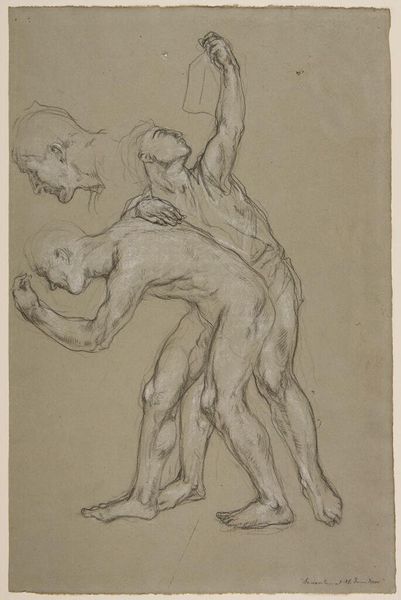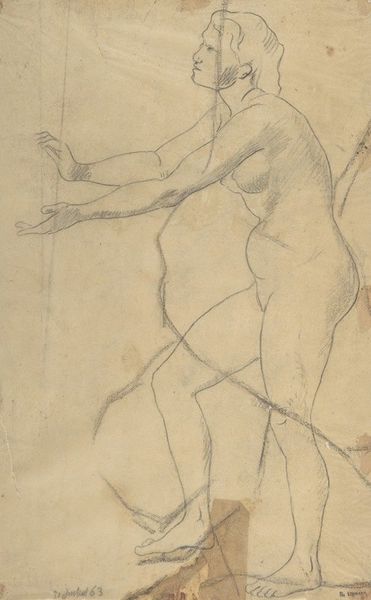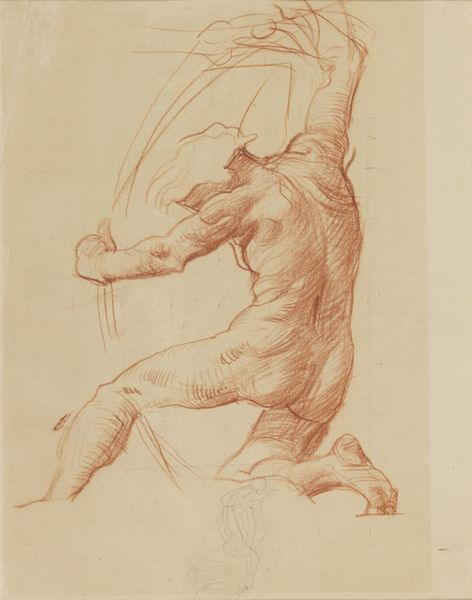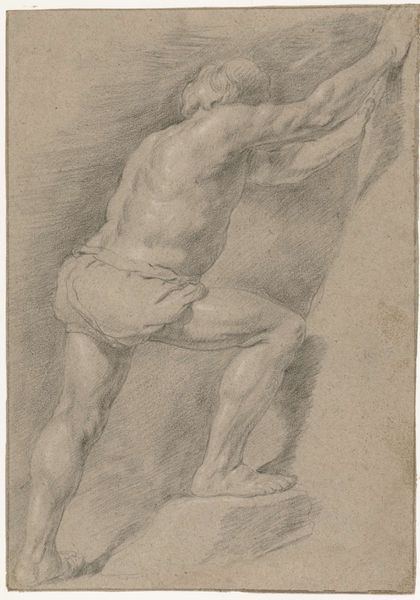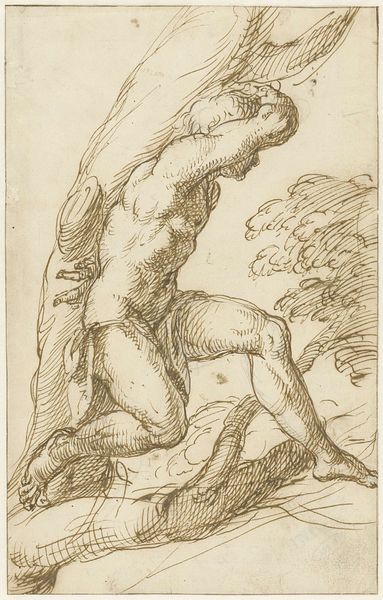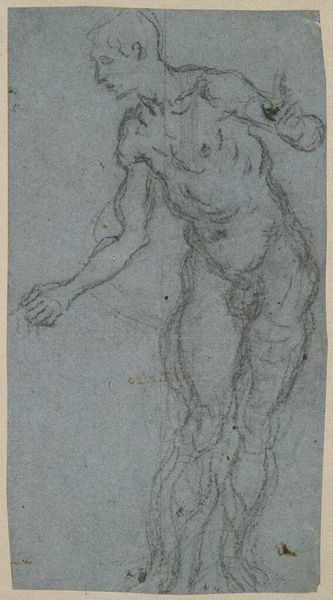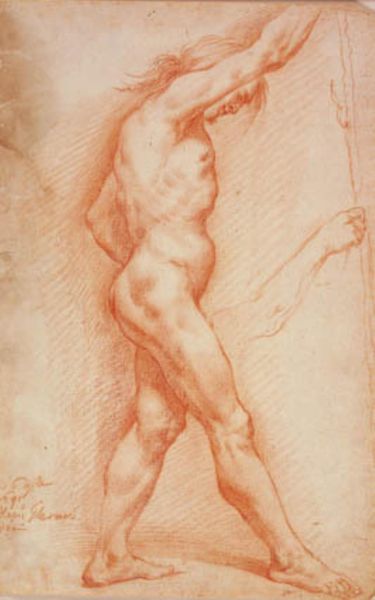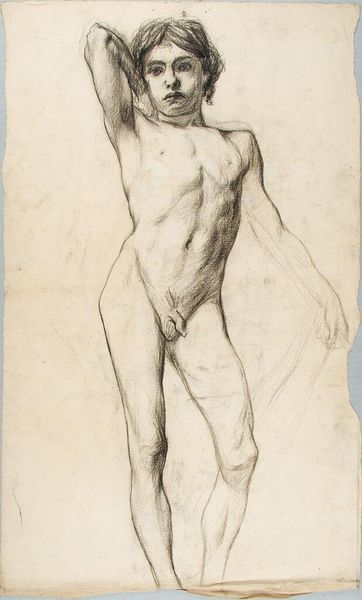
drawing, dry-media, charcoal
#
portrait
#
drawing
#
charcoal drawing
#
figuration
#
dry-media
#
pencil drawing
#
portrait drawing
#
charcoal
#
academic-art
Copyright: Public Domain: Artvee
Editor: Here we have Pierre Puvis de Chavannes' charcoal drawing, "Homme brandissant un sabre", from somewhere between 1866 and 1869. It depicts a man brandishing a sword, seemingly caught mid-motion. I’m struck by the sketchiness of the lines; it feels unfinished and raw. What do you see in this piece? Curator: Focusing on the material aspects, notice the very deliberate application of charcoal. Puvis de Chavannes isn't trying to hide the process here; the smudges, the visible lines, are all part of the final image. The economy of means, this deliberate rawness as you put it, speaks volumes about the labor involved. Think about the accessibility of charcoal, a relatively inexpensive material, and its relationship to academic art practices, specifically figure drawing from life. Editor: So, it's almost celebrating the craft of drawing itself? Not necessarily trying to create a polished product but showing us the work? Curator: Precisely! And that ties into the social context of art production. Academic art, traditionally bound by strict conventions and patronage, began experiencing challenges during this period. The shift toward artists becoming independent producers impacted not just subject matter but technique. Editor: That’s really interesting. It makes me think about how the access to affordable materials allowed artists like Puvis de Chavannes to experiment more freely and critique art hierarchies through this sort of 'unfinished' piece. Curator: Yes. Do you see this freedom reflected in the way he depicts movement, without elaborate details and solely relying on raw, rudimentary strokes? It suggests an efficient manner, almost an urgency, as if keen to share his reflection upon artistic conventions. Editor: I do. It seems to subvert expectations, both of subject matter and process. Curator: Indeed, and in doing so, questions established artistic labor and value systems. Editor: I've never thought about approaching it from the labor and material perspective, and it gives me a richer understanding of the artwork itself. Curator: Exactly. Seeing the artist's hand – both literally and figuratively – is vital.
Comments
No comments
Be the first to comment and join the conversation on the ultimate creative platform.
